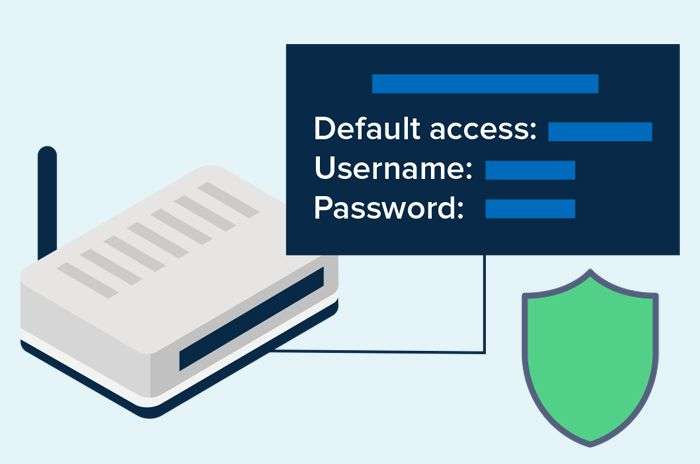4 Remote Working Best Practices to Reduce Cybersecurity Risks

If your team is working from home in any capacity (let’s face it, the hybrid workforce isn’t going anywhere) this article is for you. Your employees are signing in remotely to your corporate network. They’re accessing cloud-based applications through their home networks. And cybercriminals are just waiting for a way to breach.
The risks in remote working are real for organisations – and getting scarier each day. IBM’s 2021 Cost of a Data Breach Report found that when remote workers are involved, data breach costs increase by $1 million.
In this article, we’ll cover the key security tips you need to follow so that your employees are working more securely from home.
What are cyber security risks while working from home?
Since 2020, the shift to working from home has changed the working landscape dramatically – with no turning back. Many businesses hurried with their digital transformations to support remote working, making the attack surface wider and leaving a trail of cybersecurity risks and sensitive data.
But the risks of cyber attacks are increasing, with unsuspecting employees being targeted by hackers and causing major data breaches for their organisations. And the same study by IBM found that when it comes to remote workers, it can take an organisation 58 days longer to identify and contain a breach than an employee working in an office.
The 3 most common remote working security risks are:
- Social Engineering and Phishing – one of the most common cyber threats, historically targeting employees through email scam
- Malware – malicious software that infects your devices
- Ransomware attack – stealing and/or locking information
How to reduce cybersecurity risks
While these attacks are scary, their risks can be minimised with the right approach. There are some practical work from home cybersecurity tips employers and employees can use to protect themselves.
Here are 4 key strategies and cybersecurity tips for remote workers so your company can protect its data – and keep your business cyber resilient and cyber secure in a WFH setup.
1. Cybersafe device
The security posture of a business is closely tied to the devices the employees use. Companies need to ensure that their employees use a cybersafe device.
There are three approaches that organisations take when it comes to the devices used by their employees:
- Bring-your-own-device (BYOD)
- Company-owned, personally-enabled (COPE) devices
- Company-owned, business-only (COBO) devices
From an IT security standpoint, COBO devices are the safest, because they are easier to manage and set up as opposed to BYOD ones. Choosing the right hardware for your business is important – and the costs of a proper set-up for your WFH employees outweigh the costs of a data breach.
But depending on your business model, BYOD and COPE might make more sense for you. So here are 3 work from home cybersecurity best practices to keep in mind when it comes to a cybersafe device.
- Ensure all software is up to date, including mobile apps security, and perform software updates regularly
- Make sure you implement secure remote access such as VPN and MFA (multi-factor authentication)
- Install antivirus software
2. A safe network
When it comes to remote working cybersecurity, having a secure network is one part of the strategy. Your team might be connecting to the Internet through a home Wi-Fi network or even a public Wi-Fi network.

Securing your router. Image source: Choose.
Here are some vulnerabilities to be aware of when it comes to a Wi-Fi network and the solutions for each:
- Passwords. Make sure there’s no default password and that a new one is created.
- Security and encryption. Make sure your employees turn on WPA2 encryption.
- Wireless network. To make sure it’s not visible to anyone passing, get your IT team or employee to turn off the broadcasting of network SSID (Service Set Identifier).
Insecure home networks need to be accounted for and implementing these three steps is a great starting point.
3. Secure remote access to corporate applications
In addition to using a VPN and MFA, to ensure that corporate applications aren’t accessed by hackers, employers also should perform a device risk posture check, have a firewall and implement zero trust policies.
A zero trust policy’s motto is “never trust, always verify.” This approach is based on the assumption that the network is at risk and asks for verification every time an employee attempts to access corporate applications remotely.
But one of the most important security tips is to have strong, unique passwords. If there’s one thing that you can do today, without the need of an IT team, is to require your employees not to reuse passwords.
Poor password habits is something that companies should account for. Using a password manager and educating your employees to never use the same password twice – let alone reuse the password between work and personal accounts – is paramount.
4. Policy training
Work from home arrangements are done, hardware secured and Wi-Fi networks are checked, but what about a work from home security policy? With remote access a security risk, how do you promote security awareness? With training and education.
When it comes to the safety of your organisation, work from home security awareness is essential. A survey by Databasix found that 44% of employees don’t provide cybersecurity training to their staff.
Educating your team on the threats of working from home is one of the most important things you can do.
Work from home security checklist for employers
To reduce the risk from cybersecurity threats, it’s essential to not skip any of these steps. So here’s a checklist you can refer to when it comes to making WFH more reliable and secure.
- Educate staff
- Monitor devices
- Install security software – and keep it up to date
- Asses your attack surface
- Make sure your employees are backing up the data
We hope that this article answers why cybersecurity is important for remote employees and that you can start to implement some of the tips right away.
Each company is unique and has different needs when it comes to cybersecurity, and at MSP Blueshift we can help you make the best decisions for your business – and keep your team productive and safe when working remotely.
Contact us today and we can review your team’s work from home IT security.
